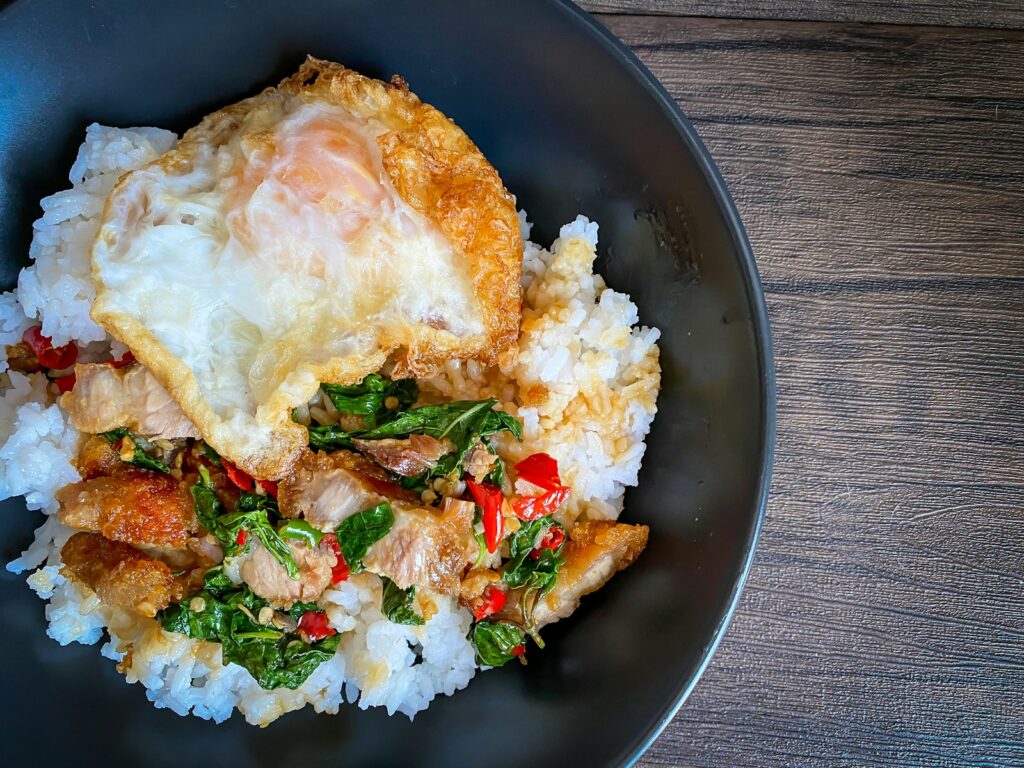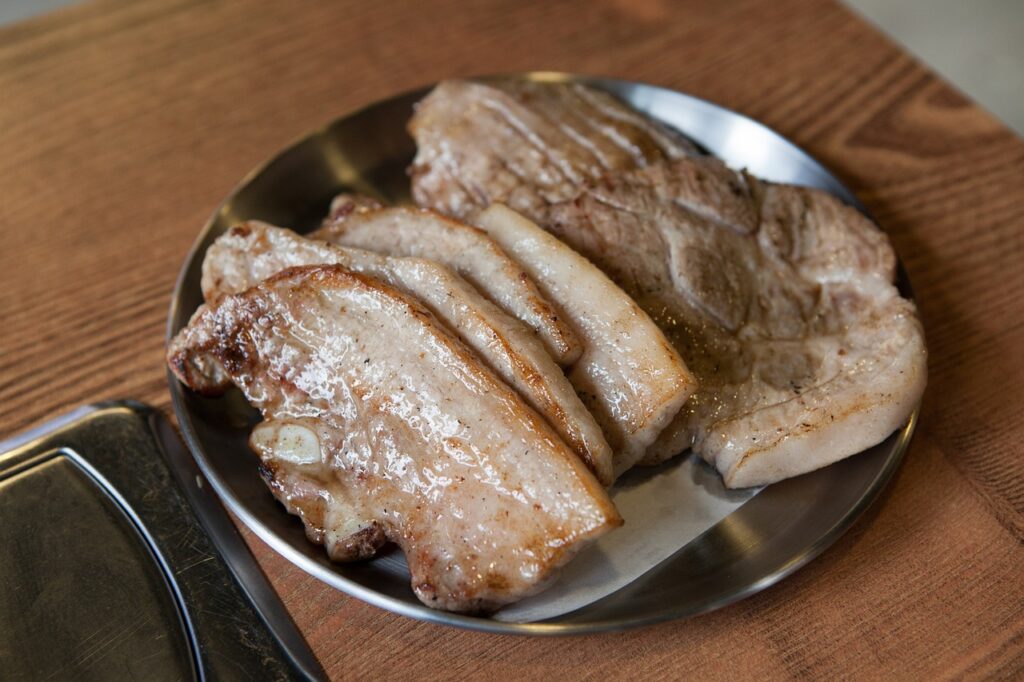While Hong Kong is clearly a gourmet heaven, offering everything from dim sum to roast goose and, of course, the legendary egg tarts, clever employers will be able to uncover some additional localized specialties that visitors may not be too acquainted with to experience. One is the rich combination of bread, butter, eggs, condensed milk, and syrup known as Hong Kong-style French toast. The other offers the energy needed to go through the day and consists of wings and pork with rice and an egg. Here’s how to create these two delicacies, or just appreciate them, and the reasons behind their appeal in Hong Kong.
Hong Kong style French toast
Hong Kong style French toast isn’t your usual morning meal. It’s more similar to a treat, or an extravagance that you enjoy on occasion. It’s produced by sandwiching two cuts of thick white bread with margarine or peanut butter, then immersing them in beaten eggs and frying them till dazzling and fresh. The toast is then sprinkled with dense milk and syrup, and it is now and again rounded off with whipped cream or frozen yogurt. The end is a creamy and delicious delight that melts in your tongue, with a variation of surfaces and flavors.
Hong Kong style French toast began from the cha chaan teng, or tea eateries, that serve a combination of Chinese and Western dishes. These eateries were famous among the typical workers during the 1950s and 1960s, and offered reasonable and satisfying dinners. French toast was one of the things on the menu, alongside diverse delicacies including macaroni soup, pineapple buns and milk tea. The cha chaan teng changed the French toast to suit the local perception of taste, by adding solidified milk and syrup, which are common fixings in Hong Kong sweets.

To make Hong Kong style French toast at home, you will require the following fixings:
- 4 cuts of thick white bread
- 4 tablespoons of margarine or peanut butter
- 2 eggs
- 2 tablespoons of milk
- Oil for searing
- Dense milk and syrup for serving
The means are as per the following:
- Spread margarine or peanut butter on two cuts of bread, and sandwich them with the other two cuts. Cut each sandwich into four triangles.
- In a shallow bowl, whisk the eggs and milk together.
- Heat some oil in a huge skillet over medium-high heat.
- Dunk every triangle of bread in the egg blend, and broil for around 2 minutes for each side, or until brilliant and fresh.
- Move the toast to a plate, and sprinkle with consolidated milk and syrup. Appreciate while hot.

Wings and pork with rice and eggs
Wings and pork with rice and egg is one additional dish that you may find in several cha chaan tengs in Hong Kong. A basic but fulfilling dish comprises of seared chicken wings, braised pork belly, steamed rice, and a broiled egg. The chicken wings are marinated in soy sauce, sugar, garlic, and ginger, and then pan-fried until firm and delicious. The pork stomach is simmered in a sauce of soy sauce, sugar, star anise, cinnamon, and straight leaves, until delicate and delectable. The rice is cooked in a similar pot as the pork, so it retains the sauce and becomes fragrant and wet. The seared egg is constructed on the dazzling side, and lends a dash of lavishness to the dish.
Wings and pork with rice and eggs is a cuisine that started with the Hakka public, an ethnic gathering that relocated from northern China to southern China and different parts of Asia. The Hakka diet is notable for its utilization of preserved and dried fixings, like salted fish, cured veggies, and dried mushrooms. Wings and pork with rice and eggs is a dish that demonstrates the Hakka’s experience in capitalizing on easy and humble fixings and converting them into a magnificent and full feast.
The following ingredients need to be prepared:
- 8 chicken wings
- 2 tablespoons of soy sauce
- 1 tablespoon of sugar
- 2 cloves of garlic, minced
- 1 inch of ginger, cut
- Oil for searing
- 1 pound of pork tummy, cut into 1-inch pieces
- 4 cups of water
- 1/4 cup of soy sauce
- 2 tablespoons of sugar
- 2 stars of anise
- 1 cinnamon stick
- 2 straight leaves
- 2 cups of jasmine rice, washed and depleted
- 4 eggs
- Salt and pepper to taste

Cooking Steps:
- In a huge bowl, throw the chicken wings with the soy sauce, sugar, garlic, and ginger. Marinate for something like 30 minutes, or up to an hour, in the fridge.
- In an enormous pot, bring the water, soy sauce, sugar, star anise, cinnamon, and narrows passes on to a bubble. Add the pork midsection and stew for about 60 minutes, or until the pork is delicate.
- Eliminate the pork from the pot and put it away. Hold the cooking fluid.
- Heat some oil in a huge skillet over high heat. Sear the chicken wings for around 15 minutes, turning once in a while, or until brilliant and fresh. Channel on paper towels, and keep warm.
- In the very pot in which you cooked the pork, heat the cooking fluid to the point of boiling. Add the rice and mix well. Lessen the intensity to low, and cover the pot with a lid. Cook for around 20 minutes, or until the rice is cooked and the fluid is retained.
- In another skillet, heat some oil over medium-high heat. Break the eggs and broil them for around 3 minutes, or until the whites are set and the yolks are runny. Season with salt and pepper.
- To serve, split the rice between four plates. Top each plate with two chicken wings, some pork stomach, and a seared egg. Appreciate some bean stew sauce or vinegar whenever wanted.
These two meals serve as examples of how different communities and districts have shaped Hong Kong cuisine. These are also instances of how you can appreciate the vast and varied cuisines that Hong Kong has to offer and dine like a manager there. You may discover anything in Hong Kong that suits your taste, whether it be sweet or sophisticated. Additionally, if you are unable to visit Hong Kong, you can always create these delicacies at home to have a taste of this lovely city.



